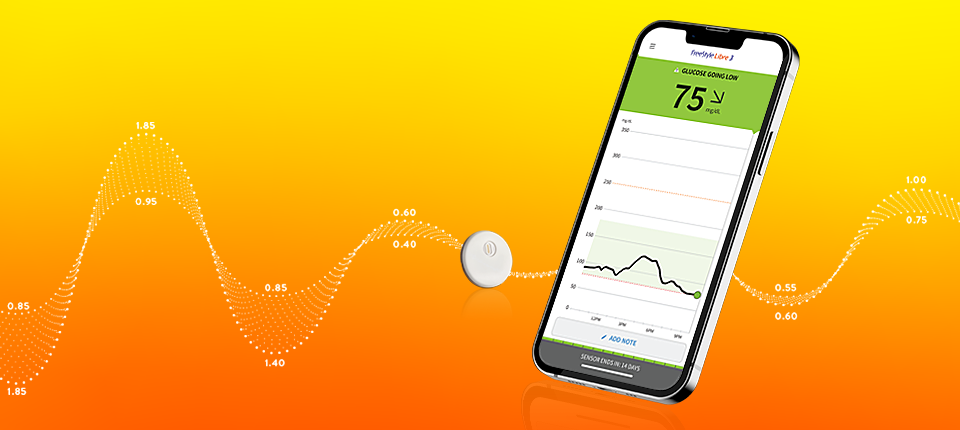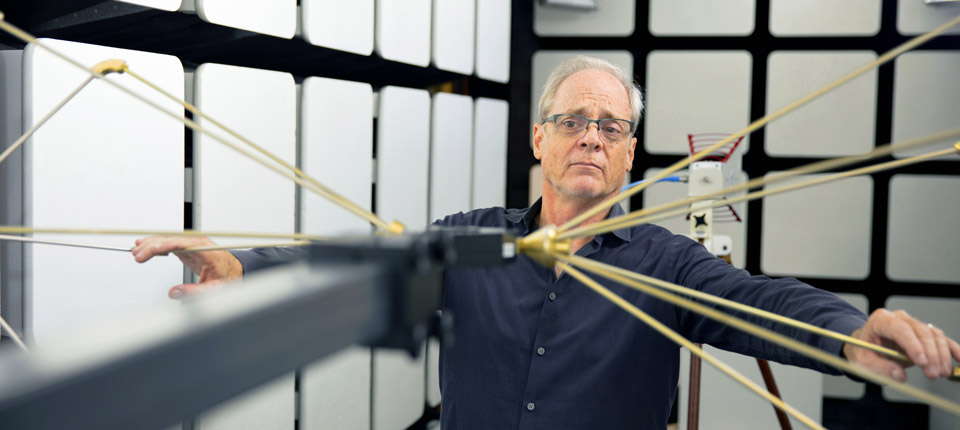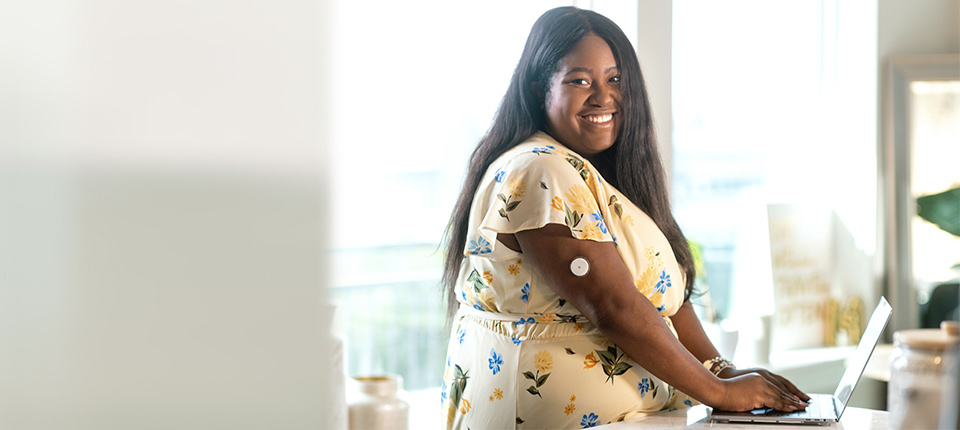
Silent No More: A Data Nerd's Diabetes Education
Mila Clarke uses FreeStyle Libre technology, desire for community to spread the word about living with the disease.
Oct. 25, 2022
- Copy Link
- Share on X
- Share on Facebook
- Share on Linkedin
Mila Clarke is all about getting the word out and the technology on.
As both a self-described "patient advocate for people with diabetes" and "data nerd,” she talks the talk on her hangrywoman.com blog while walking the walk wearing her Freestyle Libre 3 continuous glucose monitor (CGM).
She knows the value of information and communication in both her own journey and that of each of the many people who look to her for information about living their lives with diabetes.
And she understands the cost of silence.
"My mom died of complications of her type 2 diabetes earlier this year at 53," Clarke said. "She was strong, loving and selfless, never wanting to worry anyone else, always looking out for others. So, she never wanted to talk about her condition.
"I started this advocacy work several years ago, but now I am celebrating her life by spreading the word of self care and good health to as many people as possible."
Thirsting for Knowledge
Clarke knows the importance of having all pertinent information available.
After experiencing a series of troubling medical ailments years ago, she was told she had type 2 diabetes. However, it turned out to be the wrong diagnosis, one that resulted in a less-than-ideal treatment plan.
"My A1c was over 11% (normal being < 5.7; goal for those with diabetes is <7 %), I was told my fasting blood sugar was high and my doctor at the time told me I was type 2, and that I should eat better and exercise more," Clarke said. "What does that even mean without specifics? I was watching my diet and exercising two hours a day at the gym and yet, three months later, my A1c was still at 9% and I was exhausted.”
Hungry for more information, Clarke learned about the Freestyle Libre 14-day system, an innovative CGM that provides real-time glucose readings without fingersticks1, an 8-hour history and a trending arrow, with a sensor that lasts up to two weeks.
However, when she requested the device, her soon-to-be-former doctor said it was more technology than she needed, that she wasn’t being compliant with his lifestyle instructions and that it would be easier to just continue with the fingersticks.
The dissenting and decisive vote was concise and final. "I didn't agree it would be easier," Clarke said.
New Doctor, New Data
Frustrated but persistent, Clarke was confident she was doing all she could physically to keep her numbers in line. She vowed to continue to acquire information until she learned why her condition wasn't improving.
"I was ready to go to every doctor in the city until someone listened. I was doing everything I should, so what was going on with me?" Clarke said.
Fortunately, her next physician better understood her concerns and shared Clarke's enthusiasm for learning more. After the new doctor agreed to prescribe the FreeStyle Libre 14-day system, they were better able to communicate, with months of data to discuss.
"She could see how hard I was working and only getting marginal results," Clarke said. "I had lots of data and data don't lie. I could show when I had dinner and the impact it had. It added a layer of credibility and quantifiability to what I was saying."
This additional clarity led to a new finding: That Clarke's second physician would not be her last. She needed an endocrinologist to move forward in her care.
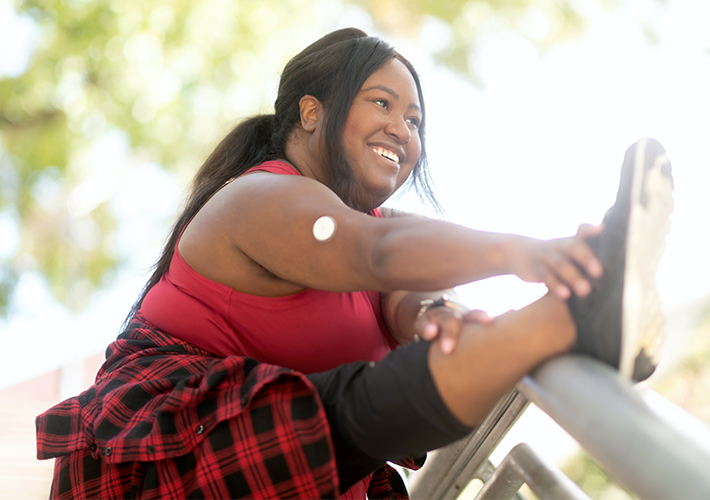
Third Time's a Charm
Sometimes upturns in treatment result from enhanced information and product innovation. Other times, simple dumb luck can lend a hand (but stick around, we aren’t done with the first two quite yet).
Clarke was next scheduled to be seen by her mother’s endocrinologist, but when she arrived at the office, she was mistakenly — and serendipitously — teamed up with her current physician.
"I couldn’t be happier," Clarke said. "He is a great listener and wants to hear everything I can share. He is so patient-centered and a bit of a data nerd, like me. He uses the data to make the best treatment plan for me as an individual, not a template.
"He treats his patients like I try to treat my blog readers and community-members: As individuals who have different needs, concerns and questions."
He was also the care provider who correctly diagnosed her with latent autoimmune diabetes in adults (LADA), also known as "type 1.5," because it allows for some insulin production, but not enough for standard type 2 treatment.
Mystery solved. Treatment adjusted and numbers corrected.
The Comfort of Numbers
Like Clarke, her doctor was always open to evolving his thought process and treatment to new ideas: Like the Freestyle Libre 2 system.
This next iteration device was the only CGM, at the time of its release, that measured glucose every minute, while meeting the highest accuracy standards,2 with optional, customizable and real-time alarms that alert users if they are too high or low.3
Clarke's infatuation with the new device was both medical and psychological. The customizable alarms allowed her to stay ahead of her glucose levels, letting her know when her numbers were getting too high or low, before her body reacted to the changes.
"I wasn't worried all the time because I knew the alarms would tip me off before I got into trouble," Clarke said. "I keep my customized, acceptable ranges tight so I could catch highs and lows quickly. That gave me great peace of mind."
That feeling of confidence has only increased since the launch of Freestyle Libre 3 in the U.S., the newest and most advanced of our CGMs. The device has some pretty nice features, including:
- The world's smallest, thinnest (among patient-applied sensors4) and most accurate 14-day glucose sensor.
- It automatically sends real-time, minute-by-minute glucose readings to a compatible smartphone5 without scanning.
- The strongest Bluetooth range amongst CGM.6
The numbers nerd in Clarke continues to be infatuated with the options provided: "My doctor and I love to discuss time in range, which lets me track how I’m doing. I can see what my custom time in range is. I like being able to personalize based on my knowledge of my body, and I love meeting my own goals."
Information Shared, Community Formed
With the technology attached to the back of her upper arm and a laptop in front of her, Mila Clarke sets out each day to help others who are where she has been: Maybe a little isolated and maybe a little afraid.
"I felt alone for so long. I didn’t want people to know I had diabetes. There was a stigma," Clarke said.
Over time, however, she realized that sharing her life, even her glucose data, with friends brought messages of support, encouragement, and comradery. Loved ones would ask questions, further expanding chances to talk openly.
She started forming a community with Hangrywoman.com, as well as seeing a path forward to make others feel more comfortable with their lives. "I found myself opening up, even educating, letting people into a world they likely didn't know," Clarke said. “People started asking questions. It was liberating."
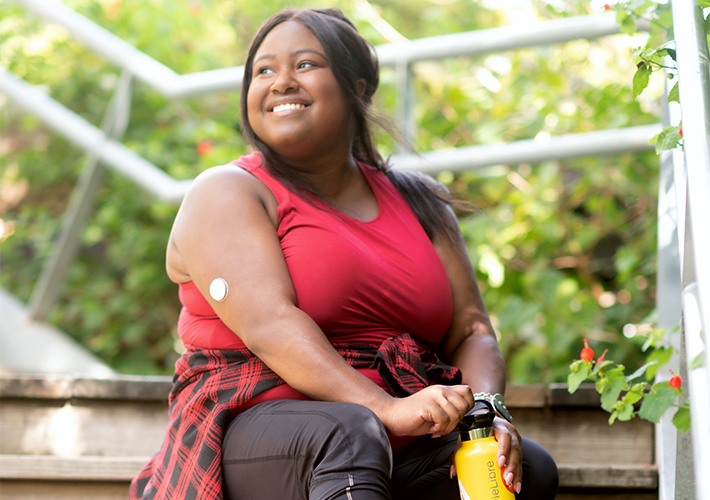
Food and Facts
It was also informative and potentially transformative. Aware of how intimidating diabetes-related content can be, she decided to feed both stomachs and minds.
"Food is such an important part of the diabetes lifestyle and I’ve always loved to make great food for my friends. People would ask for my recipes so now I add them to my blog," Clarke said.
But she's equally determined to make her other content just as digestible, taking complex information and breaking it down so it is more understandable to readers.
"I want them to have information that doesn’t read like a research study, that engages them," Clarke said. "This, combined with the person-to-person discussions helps reduce feelings of isolation."
Clarke is especially sensitive to the idea of people feeling they can't share with others. "My mom and I talked about how we wished we'd discussed diabetes earlier," she said. "I'd have loved to have been able to help ease her burden. Fixing meals, fingersticks, anything."
As she continues to grow and nurture her community, Clarke knows the brightest future is one illuminated by information, evolving technology and simple human contact: "With encouragement, accountability, technological support and help, you can live a great life with diabetes. But we have to talk about it, or we can’t get the help we all need."
The testimonial presented reflects the real-life experience of someone that has chosen to use an Abbott product and is only applicable to the individual providing the testimonial. It may not be indicative of future outcomes for prospective patients. Abbott does not claim that these are typical responses or experiences that a patient will generally encounter. In the case you are experiencing any of the symptoms noted within please consult your healthcare provider before making any diagnostic, treatment, or other medical decisions.
References
1 Fingersticks are required for treatment decisions when you see Check Blood Glucose symbol, when symptoms do not match system readings, when you suspect readings may be inaccurate, or when you experience symptoms that may be due to high or low blood glucose.
2 Based on FDA iCGM special controls.
3 Notifications will only be received when alarms are turned on and the sensor is within 20 feet of the reading device.
4 Data on file. Abbott Diabetes Care.
5 The FreeStyle Libre 3 app is only compatible with certain mobile devices and operating systems. Please check our website for more information about device compatibility before using the app. Use of the FreeStyle Libre 3 app requires registration with LibreView.
6 Based on the signal strength in Dexcom G6 CGM User Guide and Medtronic Guardian Connect System User Guide.
This story was originally published on Oct. 25, 2022, and updated on Jan. 9, 2023.
Important Safety Information
FreeStyle Libre 14 day system: Failure to use FreeStyle Libre 14 day system as instructed in labeling may result in missing a severe low or high glucose event and/or making a treatment decision, resulting in injury. If readings do not match symptoms or expectations, use a fingerstick value from a blood glucose meter for treatment decisions. Seek medical attention when appropriate or contact Abbott at 855-632-8658 or FreeStyleLibre.us for safety info.
FreeStyle Libre 2 and FreeStyle Libre 3 systems: Failure to use FreeStyle Libre 2 or FreeStyle Libre 3 systems as instructed in labeling may result in missing a severe low or high glucose event and/or making a treatment decision, resulting in injury. If glucose alarms and readings do not match symptoms or expectations, use a fingerstick value from a blood glucose meter for treatment decisions. Seek medical attention when appropriate or contact Abbott at 855-632-8658 or FreeStyleLibre.us for safety info.
Related articles
-
Strategy and Strength
FreeStyle Libre 3: Welcome to the U.S.
Abbott takes diabetes management to the next level in the U.S. with its next-gen continuous glucose monitor.
-
Diabetes Care
FreeStyle Libre 3 As Good As It Gets? ‘It's Dang Close’
How FreeStyle Libre 3 became the most advanced continuous glucose monitor we have ever produced.
For the latest on Abbott’s life-changing technology, get updates directly in your inbox.
